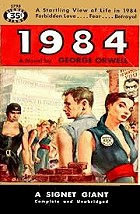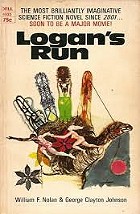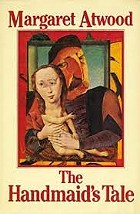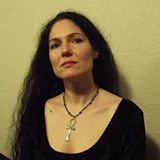Issue: Summer 2014-5
Dystopian Literature
Science Fiction That Borders on Horror
Of the numerous subgenres of science fiction, dystopian literature is arguably among the most misunderstood. While most speculative works hit close to home in one way or another, the dystopia does so in a way that can be especially unsettling. It often paints the picture of a horror story that takes place in one's own backyard, using players that far too closely resemble the neighbors next door. Moreover, the dark tone and bleak outlook common to the subgenre can, at times, overpower the message it attempts to portray, thus making many of its works less accessible to readers outside academia.
The Classic Dystopia
Up until the turn of the century, dystopian literature followed a specific structure and touched upon similar themes. The world-building typically, but not always, stretched merely into the near future, with perhaps some technological advances but more of an emphasis on social or political issues. For example, George Orwell's 19841 focuses on the destruction of free will, privacy, and personal enrichment, offering the author's thoughts on socialism taken to a negative extreme.

While Orwell himself was a socialist2, he feared what may become of the political arena should those in office become too powerful, with a particular concern for totalitarian control. While the Socialist Party of Great Britain considers the novel in itself a satire rather than a prediction of things to come, the ideals it covers do indeed warn of the potential evils that Stalinist socialism presented. The world of 1984 itself isn't much different than contemporary England, where cameras record nearly every part of the public arena; however, in Orwell's future, even the private domain is public and those who attempt to circumvent this are put strictly in their place.
Stories that follow the classic dystopian structure offer similar political platforms, with abuse of power being a common theme. The protagonist is often either fed up with the world as it has become or is somehow enlightened about the injustices to which he or she has acquiesced due to a longstanding atmosphere of compliance, which ultimately leads to some form of rebellion or social movement. The protagonist is rarely completely successful in his or her endeavors, often effecting only marginal change at best or ending the struggle in a mire of uncertainty. Sometimes the story ends with a hint of hope, such as in Ray Bradbury's Fahrenheit 4513 , but that air of uncertainty remains. This is an important component of the classic dystopia, given the purpose that underlies its works. The classic dystopian author feels the need to speculate the progression of present issues that could, if left unchecked, affect the future in undesirable ways, and this potential future holds little to no room for a happy ending. Were the story to end on a happy note, the issues it raises would lose their power, upending the message to change a particular political or social course.
Dystopia in the Social Arena

Slightly different than the Orwellian dystopia are works that revolve around social issues rather than political ones. For example, Harry Harrison's Make Room! Make Room!4 speculates the problem of overpopulation and resulting dwindling resources. William F. Nolan's Logan's Run5 touches upon a similar concept, instead offering a glimpse of extreme measures taken to preserve those resources. Kurt Vonnegut's Cat's Cradle6 focuses on technology gone awry in addition to social and political instability. These stories compel the reader to look inward and contemplate personal accountability for the future. Like the Orwellian dystopia, they rarely end on a happy note.
The problem many contemporary readers have with the classic dystopian structure is just how real its various issues can feel. There are a growing number of readers who turn to books solely as a diversion from reality; in effect, many people read to escape rather than read to think, and the more provocative literary works have taken a heavy blow as a result. While the dystopia is far from dead, some contemporary writers have taken it upon themselves to reinvent the genre to suit a readership seeking that happy ending.
The Contemporary Dystopia

An issue fans of the classic dystopia currently face is a changing attitude toward the subgenre. While many of us cling to the long-established literary tradition, younger readers are calling for a more contemporary approach. While shifts in dystopian themes aren't altogether new (for example, Margaret Atwood's 1985 novel, The Handmaid's Tale7, which tackles women's rights and personal freedoms, but ends with the indication that the movements leading to the described oppressions do come to an end) those shifts have become more notable over the past decade.
More recently, the young adult literary movement has strived to redefine the entire dystopian structure. Offer any reader who has solely read young adult (YA) dystopian literature a copy of 1984, and that reader will likely complain that the novel is too depressing and deserves a happy ending.

Suzanne Collins's The Hunger Games8 trilogy, released between 2008 and 2010 is a prime example of the contemporary face of the dystopia. This new structure calls for young love that struggles against the oppression both subjugating society and threatening to keep the couple apart. They face perilous odds, often the result of the same social or political evils addressed through the classic dystopia, only in this structure the protagonists prevail.
Another prime example of the new face of dystopia is Veronica Roth's Divergent series9 , which like The Hunger Games, gained even greater popularity when it was adapted for film. Other authors who follow the YA dystopian pattern include Leah Bobet, Jo Treggiari, Jeff Hirsch, and James Dashner.
The Dystopian Future
While the debate over what does and does not constitute a proper dystopia might continue for some time, readers can be certain at least that the subgenre isn't going anywhere. Those of us who feel strongly about preserving (and emulating) the classic dystopia can only hope it's possible to bring the readership back to its roots. At the same time, we must respect the next generation of readers, for they will ultimately be the ones who dictate the direction speculative fiction will take. Time will tell whether the future has enough room for the dystopia in all its forms.

December, 2014
Leigh M. Lane writes speculative fiction that spans from sci-fi to horror. All of her works contain a dark, gritty realism that hallmarks her unique voice.
Talk to Leigh M. Lane on Facebook
1. Orwell, George. 1984. (New York: Everyman's Library, 1950).
2. "The Political Ideas of George Orwell," The Socialist Party of Great Britain. (1986). http://www.worldsocialism.org/spgb/socialist-standard/1980s/1986/no-986-october-1986/political-ideas-george-orwell.
3. Bradbury, Ray. Fahrenheit 451, 60th Anniversary Edition. (New York: Simon and Schuster, 2011).
4. Harrison, Harry. Make Room! Make Room! (New York: Berkley Medallion, 1966).
5. Nolan, William F., and Johnson, George Clayton, Logan's Run. (New York: Dell, 1967).
6. Vonnegut, Kurt. Cat's Cradle. (New York: Dell, 1970).
7. Atwood, Margaret. A Handmaid's Tale. (New York: Fawcett Books, 1986).
8. Collins, Suzanne. The Hunger Games trilogy. (New York: Scholastic Press, 2011).
9. Roth, Veronica. Divergent series. (New York: HarperCollins, 2014).
See also:
Michael Pryor on Steampunk
Jeani Rector on Defining Horror
For posts about Melbourne events, places, news, reviews, giveaways, see our Facebook Page:






 Published in Melbourne, Victoria, Australia
Published in Melbourne, Victoria, Australia